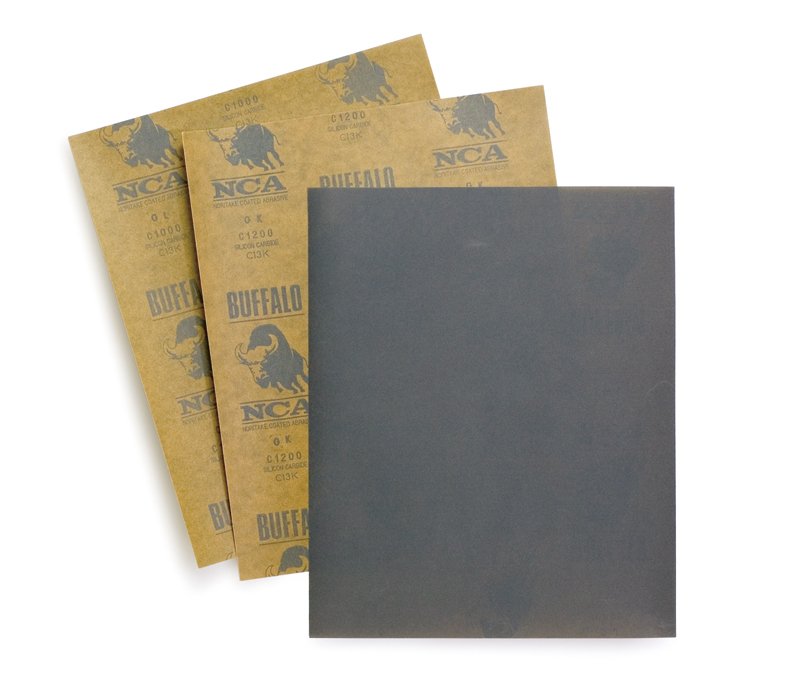Wet and Dry
耐水ペーパー
Taisuipēpā
CATEGORIES
Wet and dry is one type of sandpaper used for sanding with water. Although sandpaper generally has no water-resistant properties, wet and dry paper will not tear if exposed to water and the adhesive will not dissolve. Sanding with water reduces the friction heat cause by rubbing, prevents flying dust particles and minimizes clogging. If clogging from dust does occur, wet and dry can be rinsed with water and used again until the abrasive wears away. However, if the object being sanded is vulnerable to water or is absorbent (e.g. timber), the paper can be used without water.
The particle sizes of the abrasive used in wet and dry is indicated in grit size. Those sizes range from 80 to 100 for coarse grains and become finer as the numbers increase to 1000 and 1200. Wet and dry is soaked lightly in water and used in the same way as ordinary sandpaper. We generally begin with a coarse grain and then move on to a medium and fine grain in 3 or 4 stages. If the paper dries out while using it, simply soak it in water again. If working on metal surfaces, oil can be used as an alternative to water so that the metal does not rust. In addition to holding the wet and dry to sand an object, it can also be fixed to a board or sheet of glass and the object moved over it. This makes it easy to sand the object with an even pressure and produce right angle and flat surfaces. Wet and dry and sandpaper can be purchased at home centers and hardware stores.

